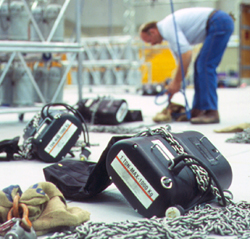I’ve worked in this business for well over three decades, and some things haven’t changed and probably never will. The promoter always wants more for less, the rider sent to me was the “old” one, and if the gear doesn’t work I don’t get paid.
There’s little that can be done about the first two, but I can make sure my equipment stays in top shape in order to be able to pay the rent, staff, and bills.
Taking care of gear is an absolute top priority, making it far less likely to break down or malfunction unexpectedly at a show. In addition, keeping it clean and looking good inspires confidence from clients who are apt to pay more because the stuff looks and (probably) sounds better than the competition.
Whether touring the world or doing a gig at the nearby tavern, successful production companies master the art of logistics, which I define as the management of materials and equipment between the warehouse and the end user.
Make A List (Or Three)
The first aspect to address is inventory management, or where to store the gear. One small system may be easier to keep together in a truck or trailer. (Just remember to safeguard against extreme temperatures.)
Most of us have more stuff than that, however, so we need to keep it in a garage, self-storage unit or office/warehouse. Devote dedicated floor areas for larger items and use shelving, cabinets, and/or drawer units for storage of smaller items.
At my company, we re-purpose old filing cabinets to store and organize microphones and a lot of small parts. The mics are kept in their factory cases or small foam-lined pistol cases, organized by type into different drawers along with stand adapters, drum claws and clamps, mic clips and DIs.
Next, think about preventative maintenance and figure out a maintenance schedule. (I’ve covered this in depth previously, most recently here.) Things like cables might need attention after each gig while other items, such as road cases, might only need a little attention once a year.
We do a check of gear both as we set it up and then pack it up at each show, making a list of any items that may need attention back at the shop (like a bad caster) and marking any bad cables and separating them so they don’t get taken to the next gig by mistake.
When booking a show, we create an event equipment list, a listing of all the equipment and spares that are required for that particular event. There are software programs that do inventory management, or you can simply set up spreadsheets to list all items required for a particular system.
It becomes our pull list for the gig, serving as a handy way to check off items as we gather them for the show and stage them in one spot for packaging and loading into the truck.

















